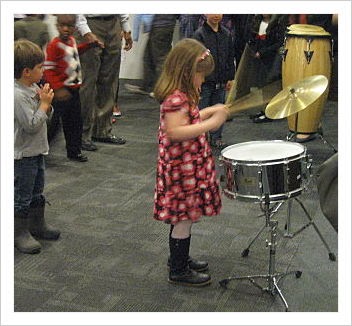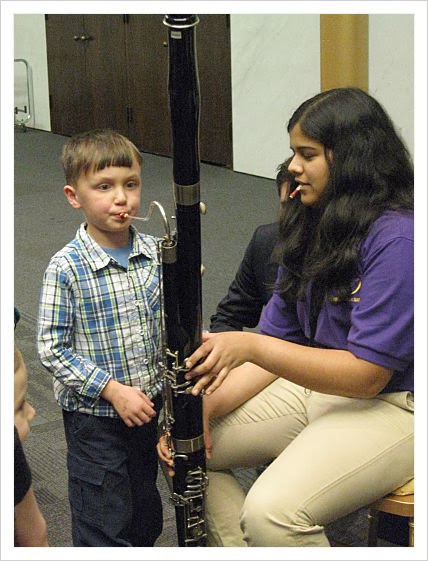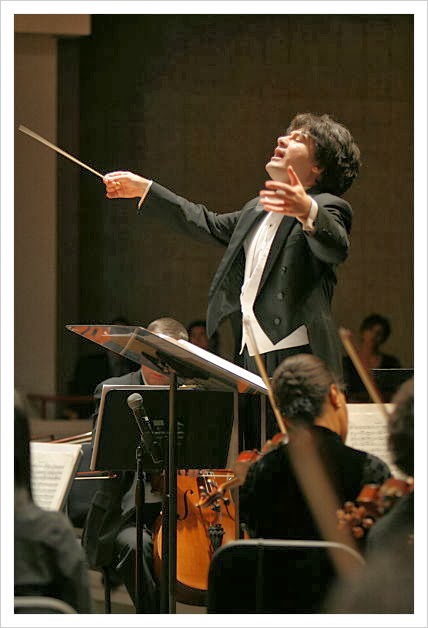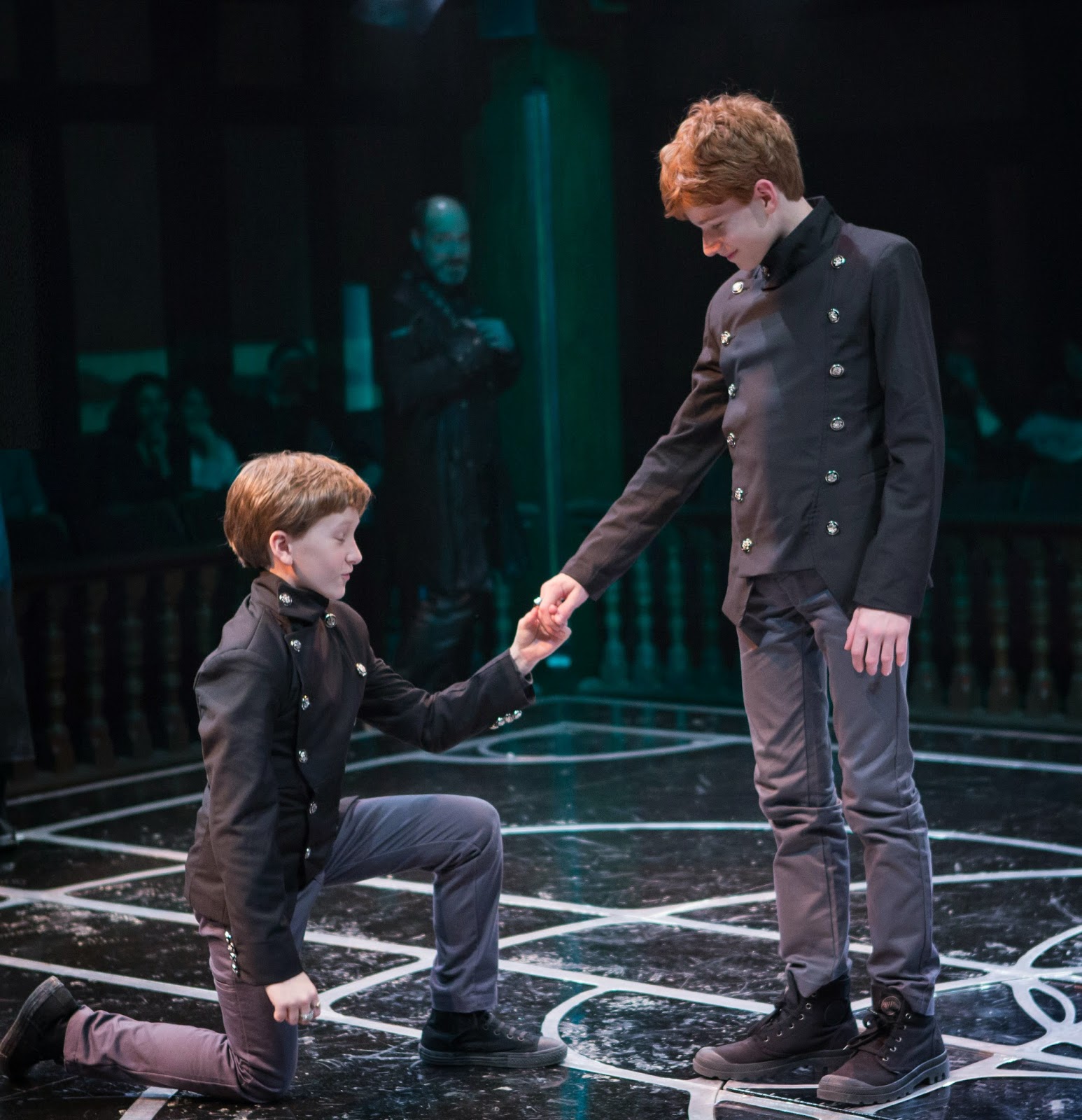.jpg) "Johann, this is how you hold it." At Sunday's "instrument petting zoo" at the Kennedy Center/Photo by Patricia Leslie
"Johann, this is how you hold it." At Sunday's "instrument petting zoo" at the Kennedy Center/Photo by Patricia LeslieWhat fun to go and see all these fine instruments up close! To touch them, to hold them, and blow them all up!
Between performances at last Sunday's Peter and the Wolf at the Kennedy Center, everyone was invited to check out and play instruments on the Terrace Level. KenCen volunteers and members of the Lake Braddock High School Band were on hand to help the budding musicians, clean mouth pieces, and provide direction. Smiles, galore! What fun! And free.
Which instrument do you think was the most popular? Just take a guess, and I'll bet you are wrong. Answer is in the photos.
 At Sunday's "instrument petting zoo" at the Kennedy Center ("I don't know if I trust this guy or not. He's a little scary to me in that checkered shirt.")/Photo by Patricia Leslie
At Sunday's "instrument petting zoo" at the Kennedy Center ("I don't know if I trust this guy or not. He's a little scary to me in that checkered shirt.")/Photo by Patricia Leslie "Stand back! It's my turn, and I don't need your help! I can play these just fine." Rat-a-tat-tat! At Sunday's "instrument petting zoo" at the Kennedy Center/Photo by Patricia Leslie
"Stand back! It's my turn, and I don't need your help! I can play these just fine." Rat-a-tat-tat! At Sunday's "instrument petting zoo" at the Kennedy Center/Photo by Patricia Leslie "Now, honey, it's Daddy's turn." At Sunday's "instrument petting zoo" at the Kennedy Center/Photo by Patricia Leslie
"Now, honey, it's Daddy's turn." At Sunday's "instrument petting zoo" at the Kennedy Center/Photo by Patricia Leslie At Sunday's "instrument petting zoo" at the Kennedy Center/Photo by Patricia Leslie
At Sunday's "instrument petting zoo" at the Kennedy Center/Photo by Patricia Leslie "Open wide like you're at the dentist's and say "'aahhhh.'" At Sunday's "instrument petting zoo" at the Kennedy Center/Photo by Patricia Leslie
"Open wide like you're at the dentist's and say "'aahhhh.'" At Sunday's "instrument petting zoo" at the Kennedy Center/Photo by Patricia Leslie Cameras, photographers, and proud parents were in abundance at Sunday's "instrument petting zoo" at the Kennedy Center/Photo by Patricia Leslie
Cameras, photographers, and proud parents were in abundance at Sunday's "instrument petting zoo" at the Kennedy Center/Photo by Patricia Leslie Shoulder-to-shoulder or instrument-to-instrument at Sunday's "instrument petting zoo" at the Kennedy Center it was /Photo by Patricia Leslie
Shoulder-to-shoulder or instrument-to-instrument at Sunday's "instrument petting zoo" at the Kennedy Center it was /Photo by Patricia Leslie And the Number One Most Popular Instrument at Sunday's "instrument petting zoo" at the Kennedy Center was the cello. The line to play it stretched from wall to wall, far more than for any other instrument. Where was the bass? Hiding in the orchestra pit/Photo by Patricia Leslie
And the Number One Most Popular Instrument at Sunday's "instrument petting zoo" at the Kennedy Center was the cello. The line to play it stretched from wall to wall, far more than for any other instrument. Where was the bass? Hiding in the orchestra pit/Photo by Patricia Leslie
patricialesli@gmail.com





















